History - The Beginnings of a Company
After the Chicago fire of October 8-10, 1871, legend says that Isaac Packard got on a train and told the conductor that when his money ran out, let him off the train. It reportedly ran out at Fort Wayne, Indiana.
However, the facts don’t support the legend. Fort Wayne was only about 175 miles from Chicago. Even taking into account train travel in 1871, it was not long by either distance or time. In addition, Isaac was not traveling alone. He came to Fort Wayne along with Robert F. Keith and Henry Talbot. The three men had been working together in the Burdett Organ Factory and may have been planning on starting a new organ concern while in Chicago. However, the fire changed any plan to found such a business. When the Fort Wayne Organ Company was organized before a notary on November 13, 1871; Isaac Packard invested $2,000 in stock, hardly someone who had run out of money just the previous month.
A question that might be asked is, “Why Fort Wayne?” Evidence has surfaced that I. T. Packard was already familiar with Fort Wayne. An 1862 exchange of letters with Isaac, his brother Edmund, and the A. Davis & Co., revealed that Isaac had been traveling through Indiana and was in Fort Wayne promoting the sale of Packard melodeons. It may not have been the only time he was in the state.
More importantly, according to the company’s catalogs:
“… Situated in the heart of the finest black walnut country in the world, and right near to it are the immense pine forests of Michigan. Most of the trunk railroad lines, between Chicago and New York, either pass-through Fort Wayne or have branches terminating there. What was more natural than that experienced organ builders should see the advantages the city afforded for a first-class organ manufactory?
After the “Articles of Association” were presented before a notary on November 13, 1871, the company was incorporated with capital stock of 800 shares at $50/each; however, the initial stock sale among the stockholders totaled just $23,000. (Within two years, the corporation was amended to limit stock to $24,000.)
These were the initial stockholders and board of directors as listed in order on the application – all listed Fort Wayne as their city of residence:
· Henry Talbot – 100 shares, $5,000
· Robert Keith* – 60 shares, $3,000
· Isaac Packard* – 40 shares, $2,000
· C. McCulloch – 20 shares, $1,000
· Charles D. Bond* – 60 shares, $3,000
· John H. Bass* – 40 shares, $2,000 (Fig. 1)
· James A. Hay – 20 shares, $1,000
· Lindley M. Ninde* – 40 shares, $2,000
· C.L. Hill – 20 shares, $1,000
· S.B. Bond* – 60 shares, $3,000 (board directors are indicated by *)
First officers were Lindley M. Ninde, president; Isaac Packard, secretary/superintendent; and S.B. Bond, treasurer. The Articles were received and filed by the Indiana Secretary of State on November 20, 1871, and the Fort Wayne Organ Company became official.
One of the first acts of the new company was to purchase land for the building of the new factory. The purchase was closed on December 1, 1871. The land was purchased from the first president of the company, Lindley M. Ninde (and his wife). 1
Ground was soon broken and construction of the new facility was begun. The building was four stories, built of brick. Extensive measures were also taken to ensure adequate water supply was available throughout the building in case a fire broke out.
The factory was completed by early 1872 as the following announcement appeared in the Fort Wayne Sentinel, February 25, 1872: “Fort Wayne is now manufacturing music – the organ factory having begun business.” The Fort Wayne News-Sentinel, March 25, 1925, informed its readers the company had begun production with the “…factory employing 24 men…” On April 25, 1872, the Fort Wayne Daily Sentinel reported “the Fort Wayne organ manufactory completed their first instrument yesterday.” (Fig. 2)
The History Center in Fort Wayne is now in possession of a Packard organ that left the factory during the first 8 months of production (Fig. 3). It may well be the organ referred to in the April 25th article.
Two sets of numbers were recorded to keep track of organ production. First was the action number. The action refers to the keyboard and reed sets and bellows; in other words, the “guts” of the organ. Action numbers were used in-house by the factory to keep track of production and were not for public use. The second number was a warranty number that was assigned to a complete organ, case and action, when it was tuned and left the factory. The warranty numbers were assigned so that the company could keep track of the factory guarantee; this was intended to benefit the end consumer.
This little organ in the History Center’s possession has action serial number 1 (Fig. 4). While it was being restored, it became apparent that the action was in the “learning mode” as drilled holes had to be adjusted to make the different parts fit properly. It also has the distinction of having been signed by Packard on the inside, indicating his approval of the finished product (Fig. 4).
It was customary for organ companies to make a series of actions and cases to be placed in storage. A case would then be decided upon and an action married to it to complete an organ. Various size actions and case designs were available as options. The action no. 1 may have remained in the factory as an example with or without a case, but what is known is that it was tuned December 6, 1872, and assigned warranty no. 7102 (Fig. 4) before being shipped as a complete organ in Case Style C.
It is also apparent that Isaac Packard considered the Fort Wayne Organ Company to simply be a continuation of his manufacturing of Packard Organs. Even though the Fort Wayne Organ Company had just been organized, the early advertising flyers suggested otherwise. An 1872 flyer states that the company has been in business since 1846, when Packard first began making instruments. (Fig. 5) As an added indication, the only name visible on the organ is Packard’s name (Fig. 4). The name of the company only appears on the warranty which is tacked inside the case. This emphasis on 1846 as a founding date also gives credence to the large warranty numbers at the beginning of production. If you have been in business since 1846, you can’t start with a low number. The spread between the action number and the warranty number runs about 7000 for many years.
When Isaac Packard died on September 12, 1873, less than two years after the company’s founding, the name policy changed. For the rest of organ production, both the Fort Wayne Organ Company name and Packard’s name were prominently displayed on the organ (Fig. 6).
+++++++++++++++++++++++++++++++++++++++++++++++++++++++++++++++++++++++++++++
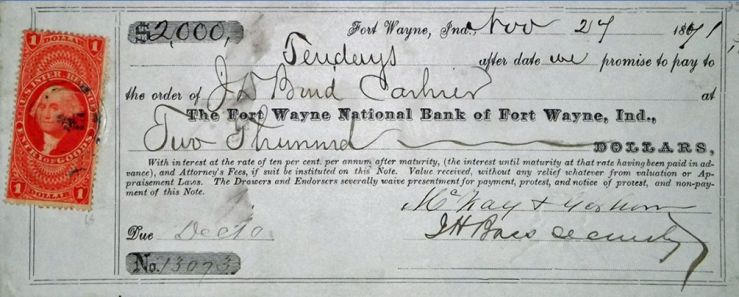
Fig. 1: John H. Bass promissory note, 1871.
This note has all the appearance of being involved with the incorporation of the
Fort Wayne Organ Company in November 1871. Bass had committed to buying forty shares of stock totaling $2000. With some of the company’s officers’ connection to the Fort Wayne National Bank, it stands to reason that this bank was handling the organ company’s finances.
John H. Bass had come to Fort Wayne in 1852 from Kentucky, leaving home at the age of seventeen. By 1856 John was in a joint venture in the foundry business, and in 1869 he acquired sole proprietorship of the Fort Wayne Machine and Car Wheel Works. He was soon involved in other business pursuits, including joining Stephen B. Bond in organizing the Citizens Street Railway Company in 1871.
It was upon this Fort Wayne stage that Isaac T. Packard, et al., entered the local scene in October and invited investors to join them in Articles of Association of the Fort Wayne Organ Company. John H. Bass contributed 40 shares valued at $2,000 out of a total of 460 shares equaling $23,000. He was also a member of the first board of directors. He held this position for the rest of his life and became the longest surviving member. John would also become vice-president of the Packard Company upon the death of Stephen B. Bond in 1907, another position he held until his death, though ill health curtailed his active involvement in business pursuits during his final years. John H. Bass died December 17, 1922, at the age of 87.
Both the Fort Wayne Daily News and The Fort Wayne Journal-Gazette carried lengthy articles about his life. While they extolled many of his accomplishments and noted his extensive business pursuits and described his beautiful suburban home known as Brookside, it seemed strange that neither mentioned his life-long participation in the operations of the Fort Wayne organ and piano company.
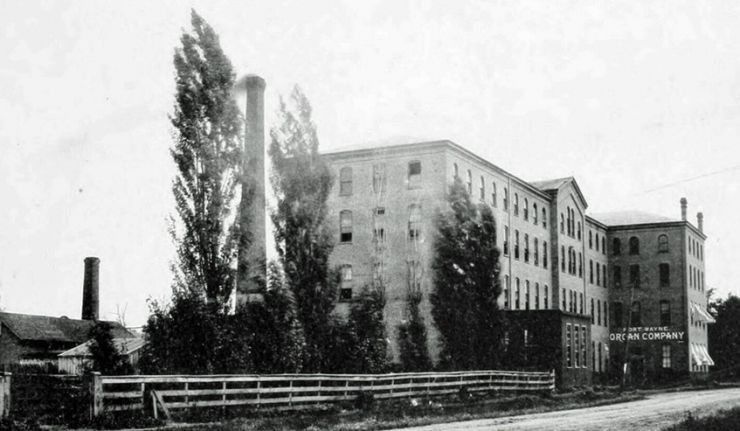
Fig. 2: 1889 Factory photograph
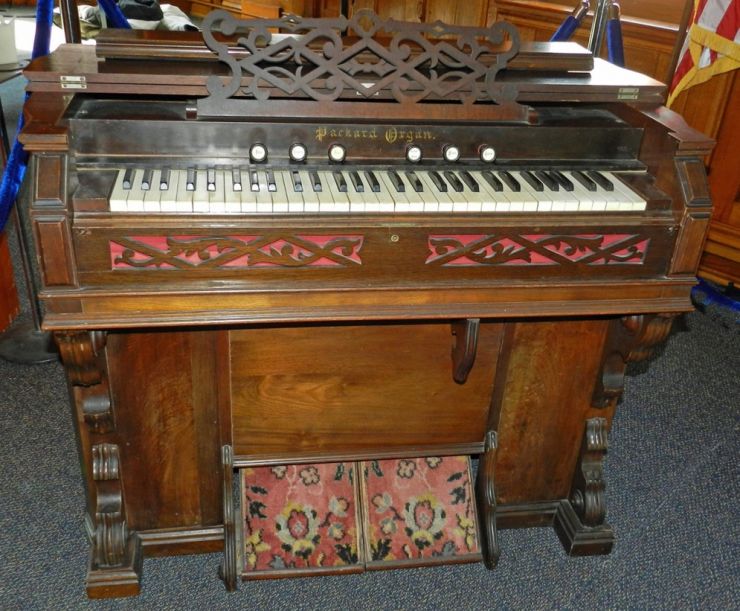
Fig. 3: Packard Organ No. 1
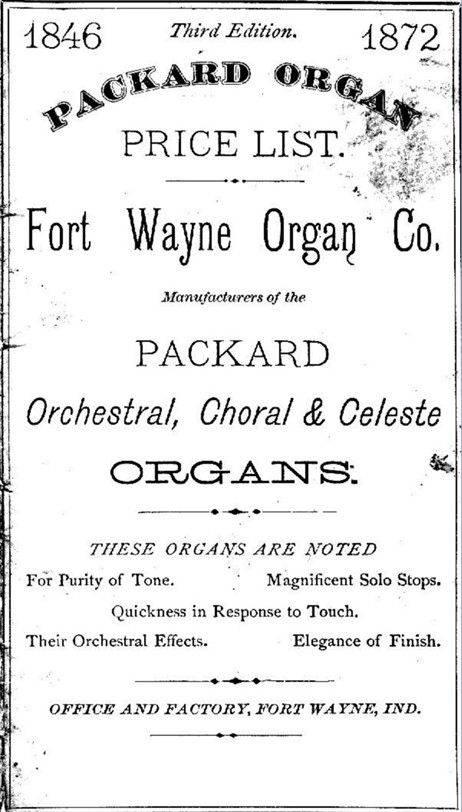
Fig. 5: 1872 Packard Organ Price List.
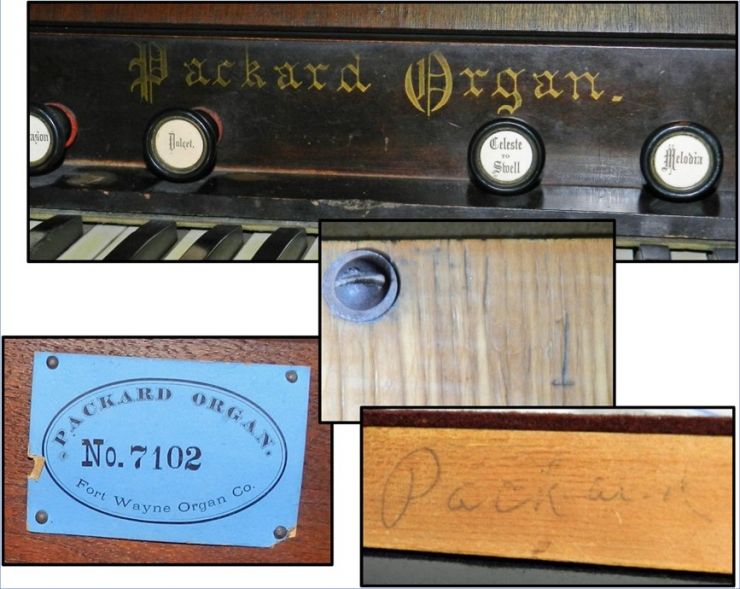
Fig. 4: 1872 Organ No. 1 information
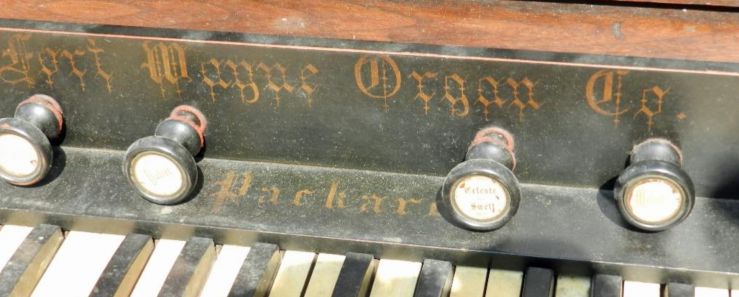
Fig. 6: 1874 Name change following Packard's death
